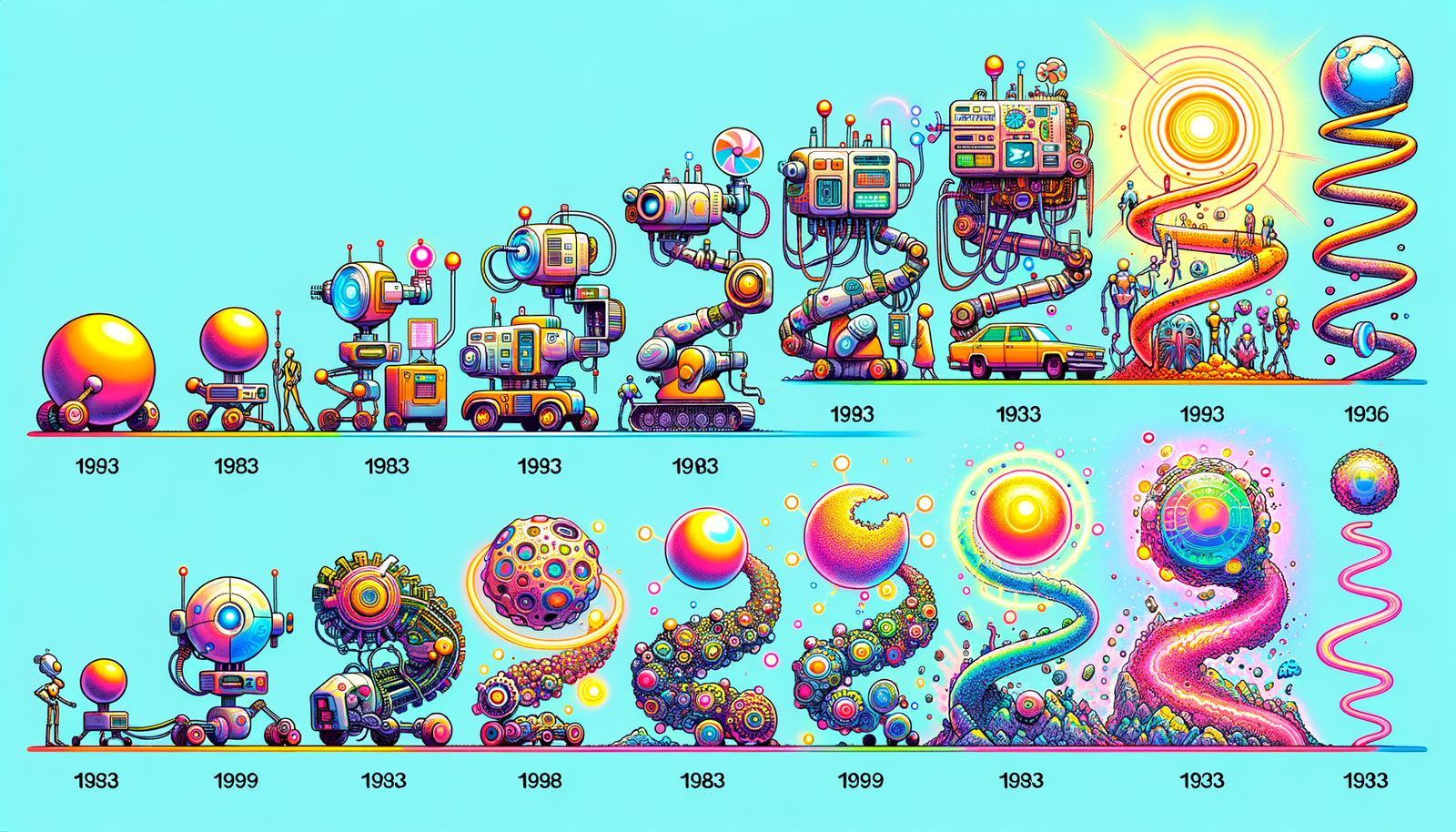Your Cart is Empty
Customer Testimonials
-
"Great customer service. The folks at Novedge were super helpful in navigating a somewhat complicated order including software upgrades and serial numbers in various stages of inactivity. They were friendly and helpful throughout the process.."
Ruben Ruckmark
"Quick & very helpful. We have been using Novedge for years and are very happy with their quick service when we need to make a purchase and excellent support resolving any issues."
Will Woodson
"Scott is the best. He reminds me about subscriptions dates, guides me in the correct direction for updates. He always responds promptly to me. He is literally the reason I continue to work with Novedge and will do so in the future."
Edward Mchugh
"Calvin Lok is “the man”. After my purchase of Sketchup 2021, he called me and provided step-by-step instructions to ease me through difficulties I was having with the setup of my new software."
Mike Borzage
Design Software History: Evolution of ANSYS Fluent: Pioneering Computational Fluid Dynamics from 1983 to the Future
August 01, 2024 5 min read


Introduction to ANSYS Fluent
Overview of Computational Fluid Dynamics (CFD)
Computational Fluid Dynamics (CFD) is a branch of fluid mechanics that uses numerical analysis and data structures to solve and analyze problems involving fluid flows. By employing computational power, CFD allows engineers and scientists to simulate fluid behavior, which can be critical in designing and optimizing systems in various fields such as aerospace, automotive, civil engineering, and environmental science.
Historically, fluid dynamics analysis relied heavily on experimental methods and simplified theoretical approaches. With advancements in computing power, the transition from purely experimental methods to computational approaches began, providing more detailed insights into complex fluid phenomena.
Introduction to ANSYS Fluent
ANSYS Inc., a global leader in engineering simulation software, has been at the forefront of providing comprehensive tools for simulating fluid dynamics through its product ANSYS Fluent. Initially developed by Fluent Inc. in the early 1980s, the software quickly became a cornerstone in CFD applications due to its robust capabilities and user-friendly interface.
The first version of Fluent was released in 1983, marking the start of a series of innovations that would shape the future of CFD. Over the years, Fluent has evolved with numerous updates, integrating advanced algorithms and features that have expanded its application range and usability.
Evolution and Technological Advancements
Early Development Stages
The early development of Fluent saw several key milestones. One of the pioneering figures behind Fluent was Brian Spalding, whose work in the field of fluid dynamics laid the groundwork for many simulation models used in the software. Early versions of Fluent focused on basic fluid flow simulations, gradually incorporating more complex models to handle various fluid dynamics scenarios.
During the 1980s and 1990s, Fluent Inc. collaborated extensively with academic institutions and industry partners to refine its algorithms and broaden its application scope. These collaborations were instrumental in developing the software's capabilities in handling turbulent flows, heat transfer, and multiphase systems.
Integration of Advanced Algorithms
As CFD applications grew more sophisticated, the need for advanced algorithms became evident. Fluent incorporated a range of turbulence models, including the k-ε model, Reynolds Stress Model (RSM), and Large Eddy Simulation (LES), to accurately predict turbulent flows. Additionally, models for simulating multiphase flows, such as the Volume of Fluid (VOF) method and Eulerian-Eulerian models, were integrated to handle complex interactions between different fluid phases.
To enhance user experience, Fluent developers focused on creating intuitive interfaces and customization capabilities. The introduction of user-defined functions (UDFs) allowed users to implement custom algorithms and models, tailoring the software to specific application needs.
Significant Versions and Updates
Over the decades, Fluent has undergone numerous updates, each bringing significant enhancements to its capabilities. Notable versions include Fluent 6, which introduced advanced meshing tools and improved solver performance, and Fluent 12, which integrated parallel processing to leverage High-Performance Computing (HPC) resources, drastically reducing simulation times.
The shift towards HPC and parallel processing marked a significant milestone in Fluent's evolution, enabling users to solve larger and more complex problems more efficiently. These advancements opened new possibilities in fields such as aerospace and automotive engineering, where detailed and accurate fluid dynamics simulations are crucial.
Applications and Industry Impact
Industrial Applications of ANSYS Fluent
ANSYS Fluent has found applications across a wide range of industries, providing engineers with the tools to tackle some of the most challenging fluid dynamics problems. In the aerospace industry, Fluent has been used to optimize aircraft designs for better aerodynamic performance and fuel efficiency. In the automotive sector, the software has helped design more efficient engines and improve vehicle aerodynamics.
Other significant applications include:
- Civil Engineering: Fluent simulations have been used in the design of efficient water distribution systems, flood management, and structural analysis of buildings subjected to wind loads.
- Electronics Cooling: The software has been instrumental in the thermal management of electronic components, ensuring reliability and performance in high-power devices.
Academic and Research Contributions
Fluent has also made substantial contributions to academic research and scientific studies. Universities and research institutions worldwide use the software to investigate new theories and methodologies in fluid dynamics. The ability to simulate complex fluid interactions has led to breakthroughs in understanding natural phenomena and improving engineering practices.
Collaborations and Partnerships
ANSYS Inc. has established key partnerships with universities, research institutions, and industry giants to enhance the capabilities of Fluent. Collaborative projects have led to significant advancements in the software and its applications. Notable partnerships include collaborations with NASA, Boeing, and leading academic institutions, resulting in innovations that have pushed the boundaries of what is possible in CFD.
Future Directions and Emerging Trends
Integration with Other ANSYS Tools
One of the significant trends in the future of ANSYS Fluent is the integration with other ANSYS tools. By combining Fluent with ANSYS Mechanical, ANSYS CFX, and other products, users can perform integrated multiphysics simulations that consider fluid-structure interactions, thermal effects, and more. This synergy is facilitated by the ANSYS Workbench platform, which provides a seamless environment for setting up and managing complex simulations.
Advent of AI and Machine Learning
The integration of AI and machine learning in CFD is an emerging trend that promises to revolutionize the field. AI-driven simulations can optimize design processes and reduce computation times by predicting fluid behavior based on historical data. Machine learning algorithms can help identify patterns and correlations in simulation results, leading to more accurate and efficient modeling.
Cloud Computing and Accessibility
Cloud computing is playing a crucial role in democratizing access to advanced CFD tools like Fluent. By leveraging cloud-based resources, users can perform large-scale simulations without the need for expensive HPC infrastructure. This accessibility opens up new opportunities for smaller organizations and research teams to utilize state-of-the-art CFD capabilities.
Sustainability and Environmental Impact
CFD simulations are increasingly being used in sustainable engineering practices and green technologies. Fluent has contributed to renewable energy projects, such as optimizing wind turbine designs and improving the efficiency of solar panels. Additionally, the software is used in environmental science to model pollutant dispersion, water quality, and climate dynamics, aiding in the development of strategies for environmental protection and conservation.
In conclusion, the history of ANSYS Fluent in Computational Fluid Dynamics is a testament to the power of innovation and collaboration. From its early development stages to its current role in driving technological advancements, Fluent has transformed the way engineers and scientists approach fluid dynamics problems. With ongoing developments in AI, cloud computing, and sustainability, the future of Fluent and CFD looks promising, offering new possibilities for research, industry, and environmental stewardship.
Also in Design News

Cinema 4D Tip: Matrix-Driven Instancing for High-Performance Scattering
December 20, 2025 2 min read
Read More
V-Ray Tip: V-Ray Anisotropy Techniques for Brushed Metals and Hair
December 20, 2025 2 min read
Read MoreSubscribe
Sign up to get the latest on sales, new releases and more …



